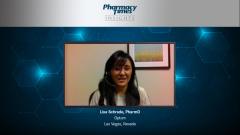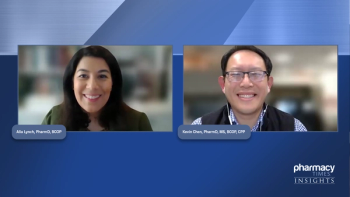
The Impact of Extended Half-life Factor Prophylaxis on the Quality of Life
Extended half-life factor products are key contributors to successful hemophilia A treatment pathways.
Episodes in this series

Lisa Schrade, PharmD: Extended half-life products affecting patients’ quality of life: It is definitely positive in regard to how it compares to the standard half-life products. However, sometimes that dosing interval changes only by 1, maybe 2, days. It really all depends on which product the patients are going with. With factor VIII products specifically, sometimes instead of doing dosing every day, or every other day, they can dose every third or every fourth day. It depends on how fast their body is burning through the factor as it’s going into the system. That comes back to my whole concern with compliance. Yes, you’re giving them 1 or 2 more days to rest those veins and giving them more time to not worry about doing an infusion. But it’s only 1 or 2 more days, and when people get really busy, 1 or 2 more days of freedom really isn’t a lot. If there’s an option to migrate to another therapy that’s less demanding, like the once weekly, or every other week, it’s beneficial. With the factor products going from standard half-life to extended half-life, when those first came out, it was beneficial for the patients. But nowadays, with the newer therapies that are available, and some that are in the pipeline, it’s not as beneficial as it once was.
The approval of the bispecific antibodies has been a game changer for the industry and for our patients. I had a patient’s family the other day who told me that they never took family vacations because their child’s therapy was so demanding, and to try to travel with that amount of product was too much. They would maybe take small road trips, but never go by plane. So, they were taking their first major vacation because they had initiated emicizumab therapy. The patient was doing great on it, not having any breakthrough bleeds, and they’re like: “We get to go on a family vacation now because we’ll give him his doses before we go and we’ll take our backup factor if we need it, but it’s only a couple of doses,” as opposed to 15 doses or 20 doses of the product having to go with them. And when they get back from their trip in a week, then they do his next scheduled injection. So it is a game changer for families, and for our older individuals. Some of them had been living with chronic joint pain for so long, they just assumed that that was going to be their baseline forever. And then they would initiate the emicizumab therapy, and within a couple of months, they noticed their joints didn’t hurt as much, maybe even at all.
Another one of my success stories is, I had a dad who liked to play basketball with his son, but he couldn’t actively participate. He would just stand under the basket, his son would throw him the ball, and he’d throw it up in the air and try to make a shot. After starting emicizumab therapy, he was able to get on the court, in the driveway with his son, and play one on one. They had full interaction, a quality-of-life improvement for not only him as a father but for the family. For families that live through a bleeding disorder, it affects everybody. It doesn’t just affect the patient who has the medical condition. It’s been an amazing change in a short amount of time that the therapy has been around.
Transcript edited for clarity.
Newsletter
Stay informed on drug updates, treatment guidelines, and pharmacy practice trends—subscribe to Pharmacy Times for weekly clinical insights.





